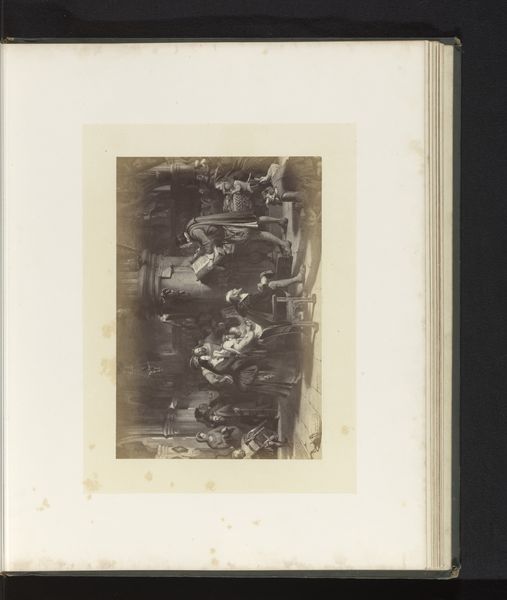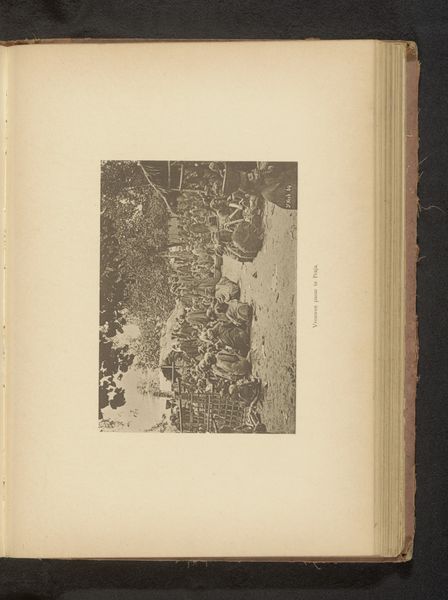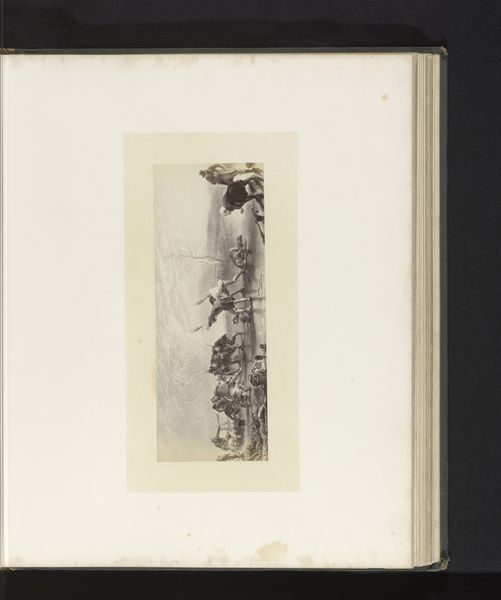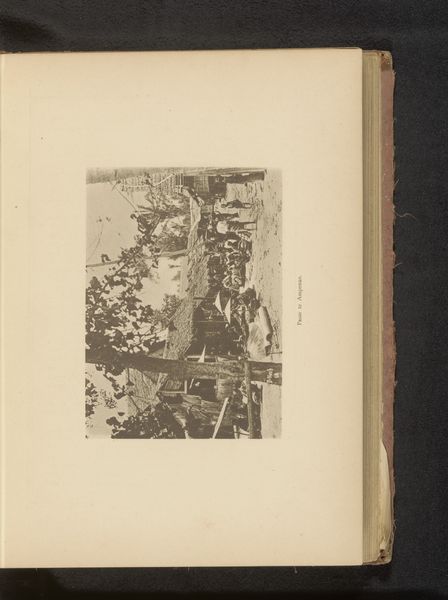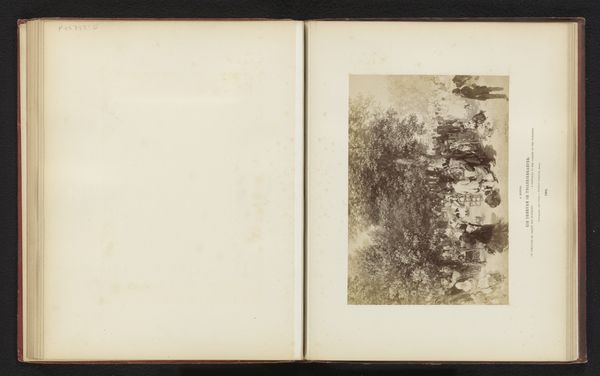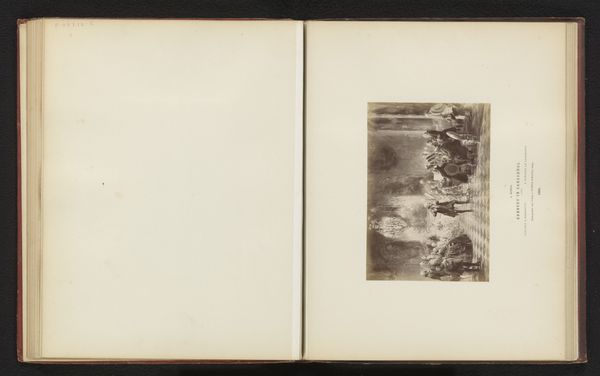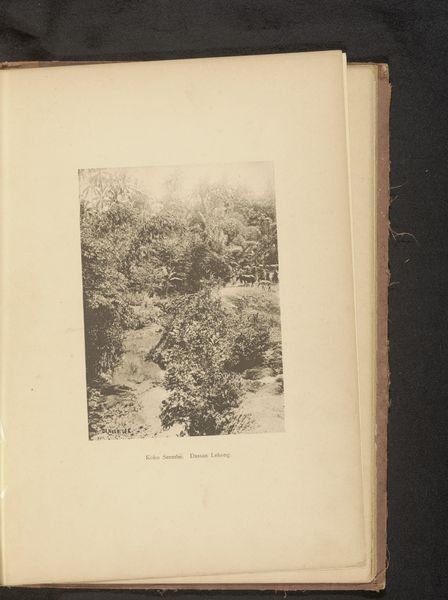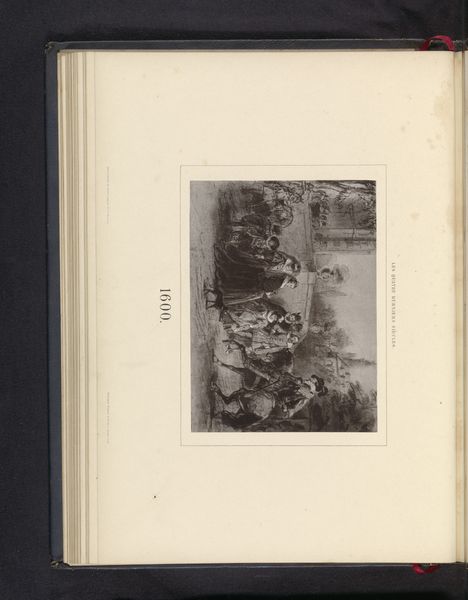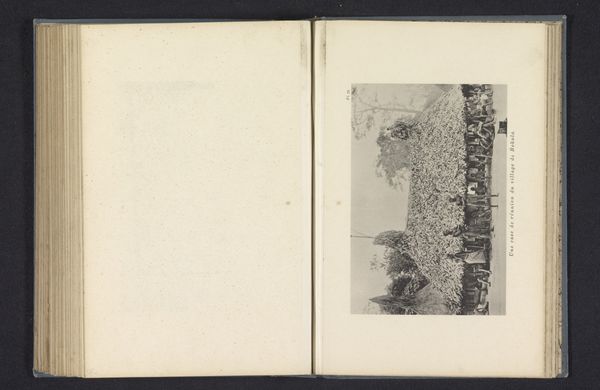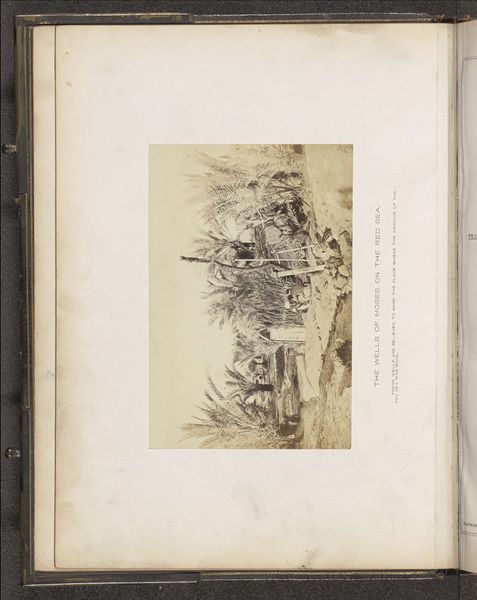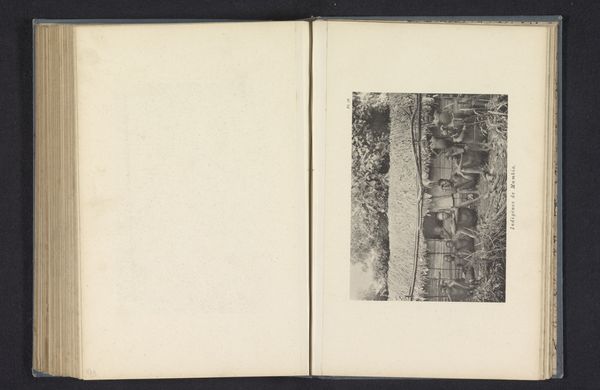
Dimensions: height 136 mm, width 97 mm
Copyright: Rijks Museum: Open Domain
Curator: This photograph, "Groepsportret in de tuin" or "Group Portrait in the Garden," comes to us from the Dutch photography duo Brainich & Leusink. Though the exact year remains unknown, it was created sometime between 1881 and 1904. Editor: My immediate impression is that it has a slightly surreal, almost dreamlike quality. The composition is so staged, so meticulously arranged, that it feels both intimate and distant all at once. Curator: Precisely. This falls under Pictorialism, which positioned photography as fine art through manipulation. Brainich & Leusink engaged with aesthetic values to mirror impressionist paintings, manipulating tones, sharpness and image structure to create an evocative atmosphere. I mean look at the woman who looks like she’s about to serve some cake, and someone’s collapsed on a hill. It plays against standard tropes and creates a distinct visual rhetoric. Editor: I wonder about that staged quality in relation to notions of the bourgeois family. The controlled environment – this isn't candid, these people were dressed up and strategically placed and maybe this was meant to represent some ideals of prosperity? Was photography playing a role in upholding social structures by crafting narratives? The reclining figure and some partially concealed subjects could mean the photograph subverts or plays with rigid social expectations. Curator: Indeed. The composition certainly creates hierarchies. Who gets to stand on the "stage," who is presented in a submissive position or from a vantage point that is clearly lesser. This manipulation extends to other layers in society at that time. Editor: Thinking about that visual language, the garden itself also speaks volumes. The way it frames the figures and is both contained, yet overgrown. The contrast gives us further clues as to how society regarded the public face of family life as carefully managed performances, especially during this period of intense societal shifts and anxieties. What remains unclear is if they wanted it known it was a 'performance' or were creating an illusion for public view. Curator: Right, and the fact that photography at this point was still largely limited to wealthier individuals only deepens this perception of class divisions and idealized lifestyles being presented as normal when actually quite privileged. So, while we can enjoy this image, it's important to understand it's construction and the politics of its imagery. Editor: Agreed. The photo operates on several levels, between art, document, aspiration, and constructed ideal. Food for thought, definitely.
Comments
No comments
Be the first to comment and join the conversation on the ultimate creative platform.
